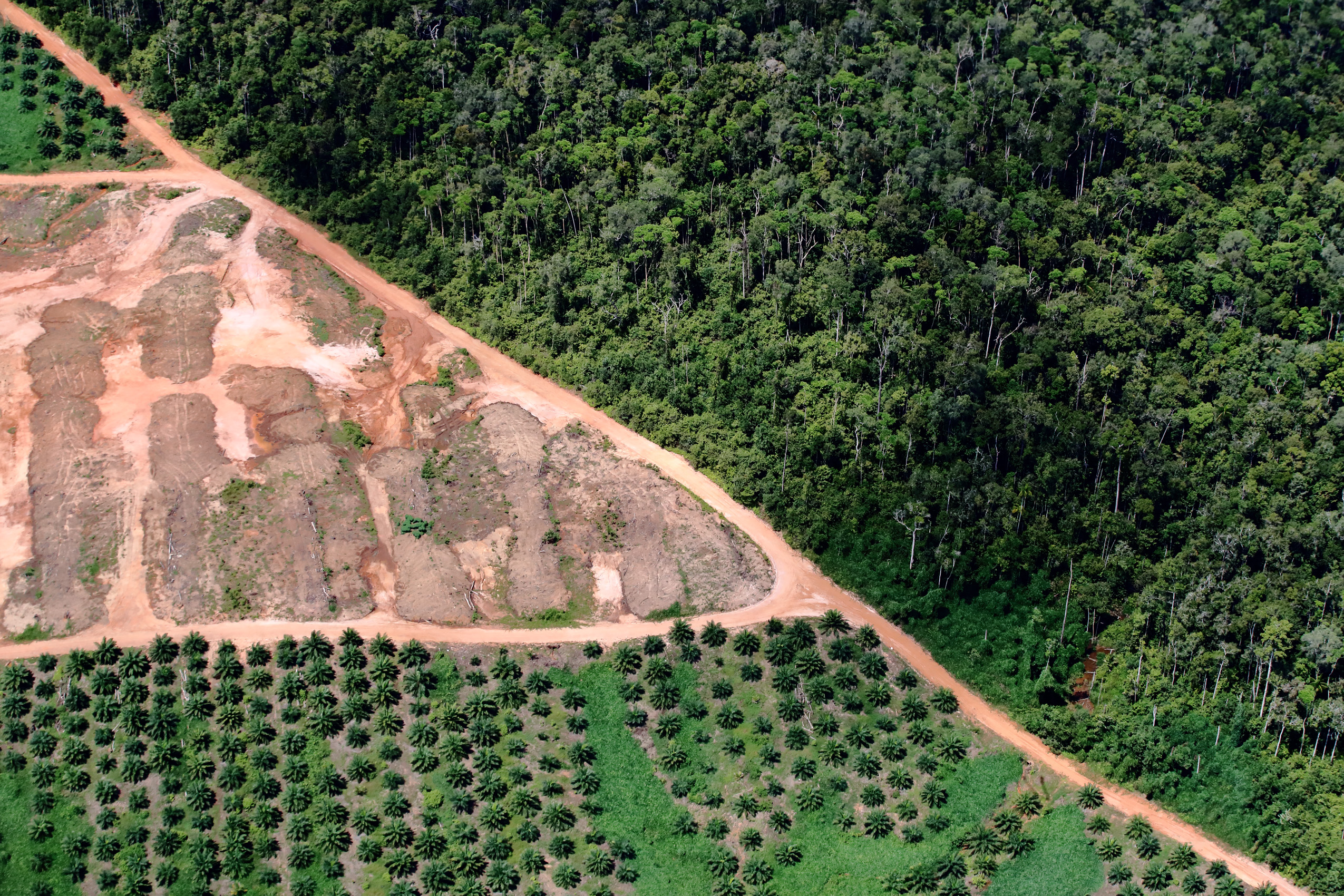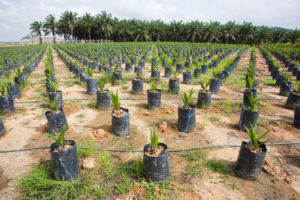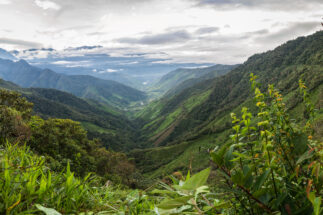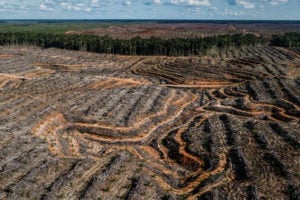China, through its vast imports of commodities like soy, palm oil, rubber and timber, has an unparalleled impact on many commodity markets linked to global deforestation and related greenhouse gas emissions. This has prompted calls for new regulations requiring Chinese importers to undertake due diligence in order to eliminate significant harms from their supply chain.
There is another important point of leverage that China should be using more to meet its commitments on deforestation, climate change mitigation and biodiversity loss: its financial sector.
Financing production and trade in food and other essential resources while adhering to high environmental, social and governance (ESG) standards can help foster socio-economic development. It can support progress towards UN Sustainable Development Goals such as reducing inequality and providing decent work and economic growth. Yet, without stringent safeguards, commodities produced in tropical forest regions have tremendous potential to cause adverse ESG impacts, including land rights conflicts, labour rights issues, biodiversity destruction and the catalysation of climate change through conversion and degradation of natural forests.
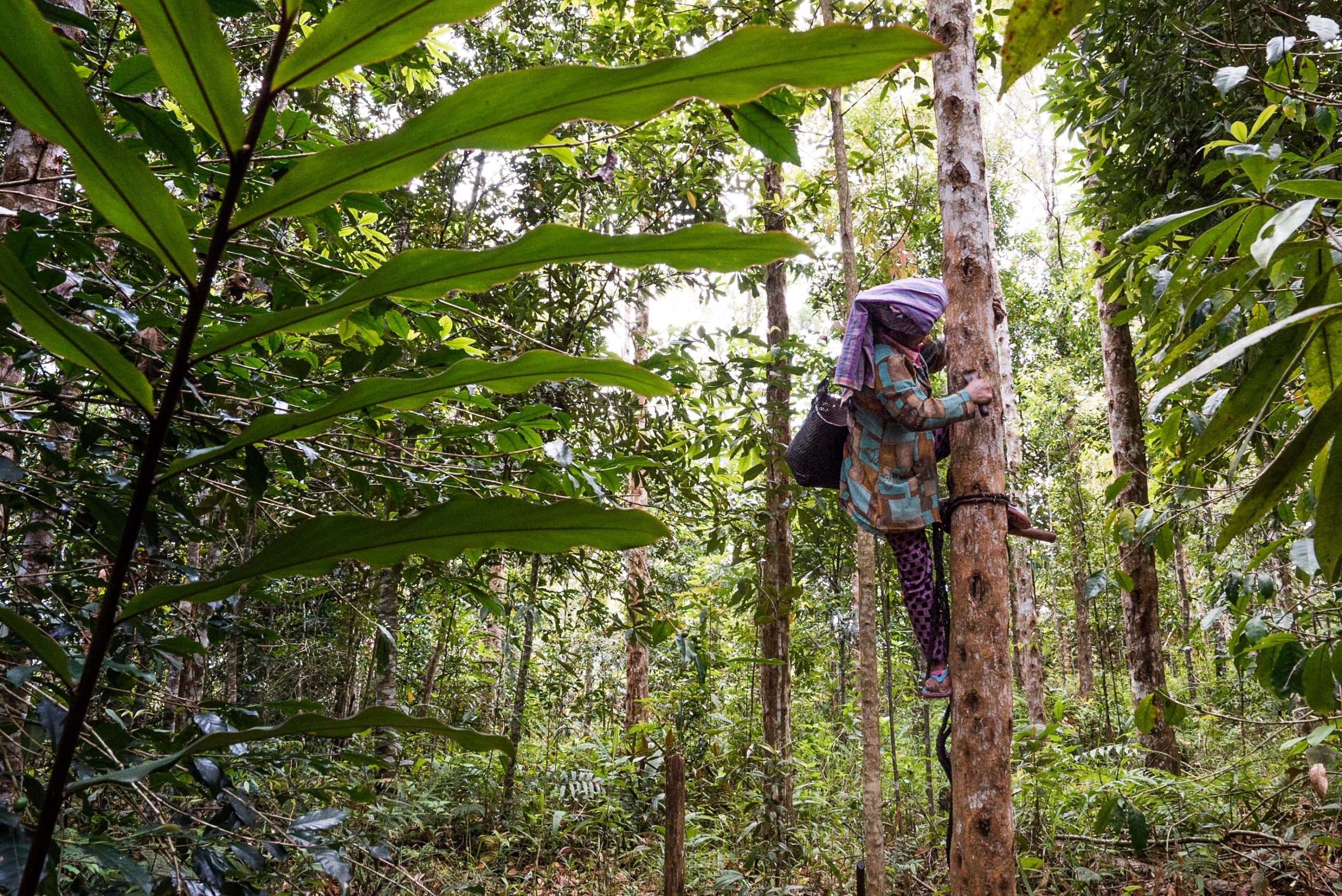
A new study by Forests & Finance – a coalition of research groups and civil society organisations from the US, Indonesia, Netherlands, Brazil and Malaysia – demonstrates how highly exposed Chinese financial institutions (FIs) are to deforestation and related ESG risks linked to the operations of six commodities – beef, soy, pulp and paper, palm oil, rubber and timber. Based on data gathered from financial databases and company publications, we estimate that between January 2016 and April 2020, Chinese FIs provided at least US$15 billion in loans and underwriting services to companies involved in forest-risk commodities in the three tropical regions under the scope of the study – Southeast Asia, Brazil, and Central & West Africa.
“Forest-risk” refers to the known or potential environmental and social impacts routinely associated with the production of commodities in forested areas. The risks of these harmful impacts are passed onto associated companies involved in the physical supply chain or through financing relationships.
Our research is not exhaustive. But the 300+ companies we studied are a representative sample of the largest foreign and domestic companies in terms of their capacity to produce the six commodities, or the areas of their land that impact or cause potential harm to tropical forests, wetlands and communities. The research identified that 75 Chinese creditors – including the Big Four Chinese commercial banks – have financed the production of forest-risk commodities. Further, it identified over 100 Chinese institutional investors (primarily asset managers and insurance companies) that have financial relationships with those 300+ Chinese companies.
China only has small areas of tropical forest. Yet the at least US$15 billion of financing provided by Chinese FIs makes the country the world’s second largest financier of tropical forest-risk commodities. At the top is Brazil, the world’s largest producer of soy and second largest producer of beef ($53 billion of financing). And in third place is Indonesia, the world’s largest producer of palm oil and one of the largest producers of both rubber and tropical timber ($14 billion).
Figure 1 shows that in 2016-2020 approximately two thirds of forest-risk financing from Chinese FIs supported the operations of forest-risk companies in Southeast Asia, while Central & West Africa, and Brazil accounted for 19% and 13% respectively. Approximately one third of their financing was attributable to pulp & paper, and another third to rubber. While palm oil and soy financing accounted for a small share of their portfolios, Chinese FIs are still the fifth and second largest financiers respectively of these two commodities.
The report highlights five major clients receiving Chinese bank loans and underwriting services that are involved in illegal or unsustainable corporate practices like deforestation, peatland degradation, land and forest fires, land rights violations and bribery. Other clients may also be exposed to these risks. In the context of growing global consumer awareness and commitments from mid- and down-stream operators to sustainable supply chains, these issues translate to material financial risks for Chinese FIs.
Forest-risk clients
Chinese bank exposure to Indonesia’s pulp & paper sector illustrates this material financial risk. About one third, or $5 billion, of Chinese loans and underwriting captured by our data went to two family-controlled conglomerates that dominate Southeast Asia pulp & paper sector: Sinar Mas Group (parent of Asia Pulp and Paper) and Royal Golden Eagle Group (parent of APRIL and Toba Pulp Lestari). Both groups have a well-documented track record of deforestation, land fires, and violations of land rights and human rights.
While both claim to have reformed their ways over recent years, fundamental environmental and social issues with their business models persist, or have even intensified. For example, there are 122 active land conflicts between local communities and Sinar Mas Group’s pulp suppliers. Royal Golden Eagle signed a “zero-deforestation” commitment in 2015, but has since sourced from a company that cleared over 7,000 hectares (ha) of natural forest.
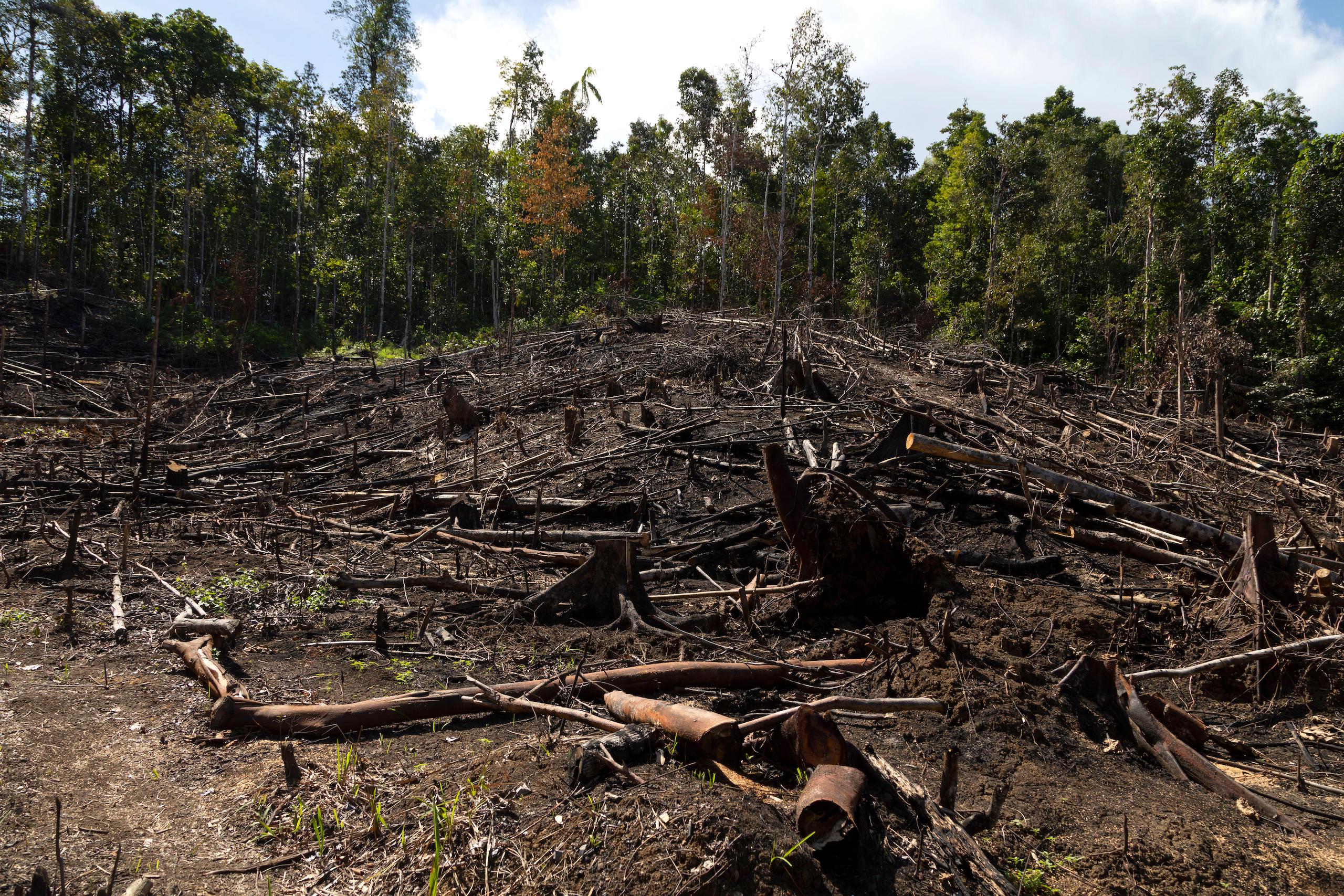
Both pulp groups have had extensive illegal fires in their concessions and those of their suppliers over multiple years, and have been sanctioned by the Indonesian government for this. One of the main drivers of the fires is the conversion of peatlands into plantations, which causes flammable methane underground to be released. Indonesia’s peatland fires have been so intense that they have made it one of the world’s biggest greenhouse gas emitters. During a bad year, the haze is also estimated to cause tens of thousands of excess deaths and billions of dollars in economic loss and damage. Both Sinar Mas and Royal Golden Eagle supply chains remain “locked in” to wood fibre produced on flammable peatland to meet the demand of its mills.
Analysis of finance to forest-risk companies in Central and West Africa reveals a different permutation of ESG risk. Approximately 19%, or $2.8 billion of Chinese forest-risk loans and underwriting was directed to groups operating in this region, with 79% attributable to rubber and 21% to timber. State-owned China Forestry Group Corporation (CFGC) is one of the major recipients of this finance, provided with $663 million between January 2016 and April 2020.
Domestic regulations don’t apply to us. This is Africa. We only follow whatever is locally required.An official of Hua Jia, a susidiary of China Forestry Group Corporation, speaking about guidelines for Chinese investment overseas
GFGC operates a 350,000 ha timber concession across the TRIDOM region, a Unesco World Heritage Site that spans Cameroon, the Republic of Congo and Gabon. In 2019, the Environmental Investigation Agency (EIA) exposed illegal and corrupt practices by GFGC subsidiary Hua Jia, including bribery of local officials and illegal logging. The investigation revealed that a Hua Jia official, referring to Chinese overseas guidelines, said: “Those domestic regulations don’t apply to us. This is Africa. We only follow whatever is locally required”. These practices are major ESG red flags that translate to material risks to Chinese banks if for example, illegal practices result in the suspension of logging rights, concessions being revoked, and the confiscation of inventory, among other civil or criminal sanctions.
Since 2016, Chinese FIs have provided at least US$1.4 billion in loans and underwriting services to COFCO’s soy operations in Brazil. Even though the company does not operate its own soy farms, it is exposed to ESG risks through its supply chain. COFCO is a major client of the Argentine agribusiness Cresud. Approximately 37% of Cresud’s agricultural land is managed by BrasilAgro, which, in the period 2012-2017, cleared 21,690 ha of native vegetation in the Brazilian Cerrado. A year later, the company had cleared a further 1,194 ha, and a further 5,000 were at imminent risk of being cleared by the company.
China’s current responses
The existence of these ESG risks is not news to Chinese policymakers and regulators. The government has developed numerous guidelines and initiatives, like the 2012 Green Credit Guidelines and the 2017 Guidelines on Regulating the Banking Industry in Serving Enterprises’ Overseas Development and Strengthening Risk Control, intended to mitigate negative impacts while fostering the benefits of financing, both domestically and abroad. In fact, Chinese policymakers were arguably ahead of other countries in the world, with the EU and other regions following by example.

However, these guidelines lack legal weight, and our study has found that implementation appears weak. Numerous clients of Chinese banks do not appear to meet criteria set out in the guidelines, as frankly put by the official from Hua Jia. But Chinese companies operating overseas also struggle to comply with host country laws and regulations, let alone higher international norms and standards that they are called upon to uphold. Moreover, channels for communication (eg grievance mechanisms) with Chinese FIs by affected communities and other stakeholders still need significant improvement. Such communication and grievance mechanisms are key to resolving specific issues, and would serve the longer term purpose of increasing awareness of ESG issues among Chinese FIs, thereby reducing their risk exposure.
What should China’s policy response be?
Current measures developed by the Chinese government do not present detailed criteria on which FIs can base their due diligence processes. These measures could be tightened. Supplementary regulations should require FIs to check their clients’ ESG performance to ensure they do not finance deforestation and related issues.
In addition, Forests & Finance has in this study designed a set of minimum standards based on the three ESG pillars (environment, social and governance) and 34 criteria that Chinese FIs should demand of their clients and investees. These criteria can be seen as elements of a detailed procedure in line with the spirit of the aforementioned guidelines specific to forest-risk sector financing. In addition to minimum standards, financial institutions should develop new tools or strengthen existing tools to assist them in evaluating ESG risks in their due diligence process, as well as monitoring their clients. We recommend Chinese financial institutions follow these concrete steps:
1. Adopt clear policies to manage forest-risk sector credit and investment decision-making. The minimum standards developed by Forests & Finance should form the basis of those policies.
2. Conduct enhanced due diligence by screening potential and existing investee companies and clients for compliance with their credit and investment policies. Assess company exposure to ESG risks, policy commitments, and capacity and track record to address such risks. This enhanced due diligence is required by China’s Green Credit Guidelines.
3. Be engaged by regularly monitoring clients’ and investees’ activities to ensure that these companies continue to meet the standards of their credit and investment policies. Existing guidelines on regulating overseas lending and investment call upon financial institutions to engage with affected communities, NGOs and other stakeholders. This is a welcome recommendation. In order to be most effective, Chinese financial institutions should open such channels of communications, and be responsive in their engagement with civil society organisations.
4. Divest by terminating financing agreements and sell bonds and shares if the company violates the terms of agreements regarding ESG-related policies. This includes cases where they fail to take immediate action to correct any ESG policy violations and put in place corrective actions to prevent reoccurrence. Not financing companies with poor ESG performance records is an explicit recommendation of the Green Credit Guidelines.
Taking these steps is key to financing the responsible production and trade in food and other essential resources. This has the potential to help foster socio-economic development and meet UN Sustainable Development Goals, like reducing inequality, and providing decent work and economic growth. Without these measures and stringent safeguards, commodities produced in the world’s tropical forest regions have tremendous potential to cause adverse ESG impacts.
